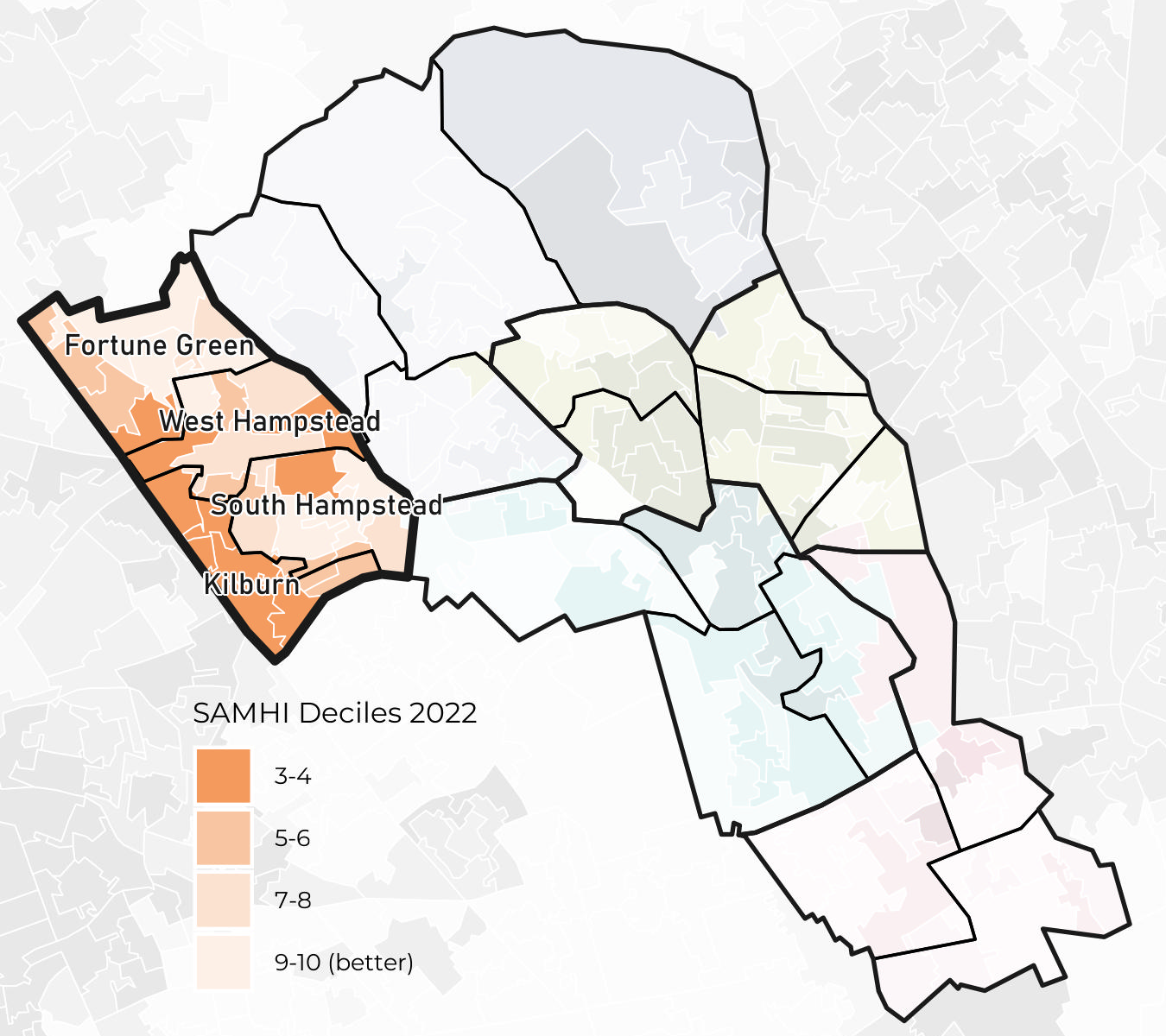Camden West neighbourhood profile
A summary of the West neighbourhood of Camden comprised of Fortune Green, Kilburn, South Hampstead, and West Hampstead wards
The West neighbourhood is comprised of Fortune Green, Kilburn, South Hampstead, and West Hampstead wards.
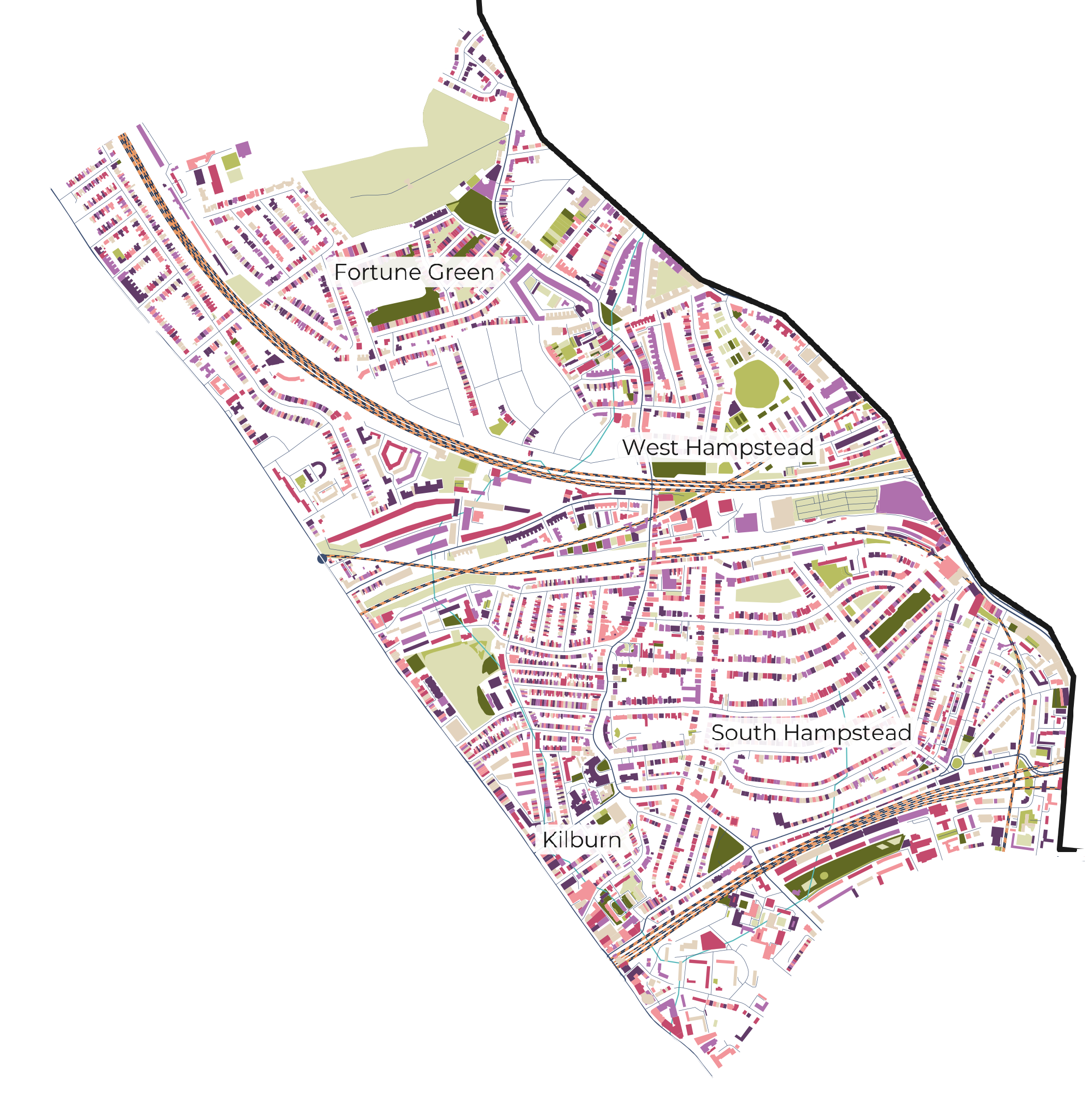
Introduction
This is a summary profile of Camden’s West neighbourhood which comprises of four wards - Fortune Green, Kilburn, South Hampstead, and West Hampstead. It includes data on the neighbourhood’s demography, levels of deprivation, and key health indicators such as life expectancy and prevalence of long-term conditions.
The West neighbourhood demonstrates variability in health outcomes between wards, with areas of both affluence and deprivation.
In comparison to other wards in the West neighbourhood (Fortune Green, South Hampstead and West Hampstead) Kilburn ward stands out, demonstrating poorer health outcomes across the range of indicators considered: childhood and adult obesity, alcohol dependence, smoking prevalence, and prevalence of long-term conditions.
Kilburn also has higher levels of economic inactivity, household overcrowding and a high percentage of residents with limited English proficiency.
Kilburn ward is ethnically diverse and has significant Black African (10%) and Arab (6.7%) populations.
Ward level profiles are available in the following pages:
Demography
Population
The London Borough of Camden has approximately 219,900 residents according to the latest population projections. Of this total, 48,600 reside in the West neighbourhood, making it the neighbourhood with the second most number of residents. There are 25,900 female residents and 22,700 male residents in the West neighbourhood.
Age
Children and young people (0-24 years old) make up 26.18% of the population of the West neighbourhood which is less than Camden overall (30.85%). Additionally, the percentage of older adults aged 65+ years is 10.83% compared to 12.02%.
Ethnicity
The following data uses the Office of National Statistics (ONS) ethnicity classifications. When looking at the broader ethnicities (e.g. ‘Asian’ instead of ‘Asian: Indian’), the most frequently reported ethnicity in the West neighbourhood is White (59.29%), which is lower than Camden (59.52%). Additionally, this neighbourhood exhibits higher proportions of residents identifying as Black, Other ethnic group, and Mixed.
This ward has a similar ethnicity profile to Camden.
Wider Determinants of Health
Index of Multiple Deprivation
Fortune Green and Kilburn stand out as the wards with highest deprivation in the neighbourhood, particularly when looking at the Income Deprivation Affecting Children Index (IDACI) and the Income Deprivation Affecting Older People Index (IDAOPI).
The most deprived LSOAs in the West neighbourhood neighbourhood according to IMD deciles are in Kilburn (decile 2) while the least deprived LSOAs are in Fortune Green (decile 10).
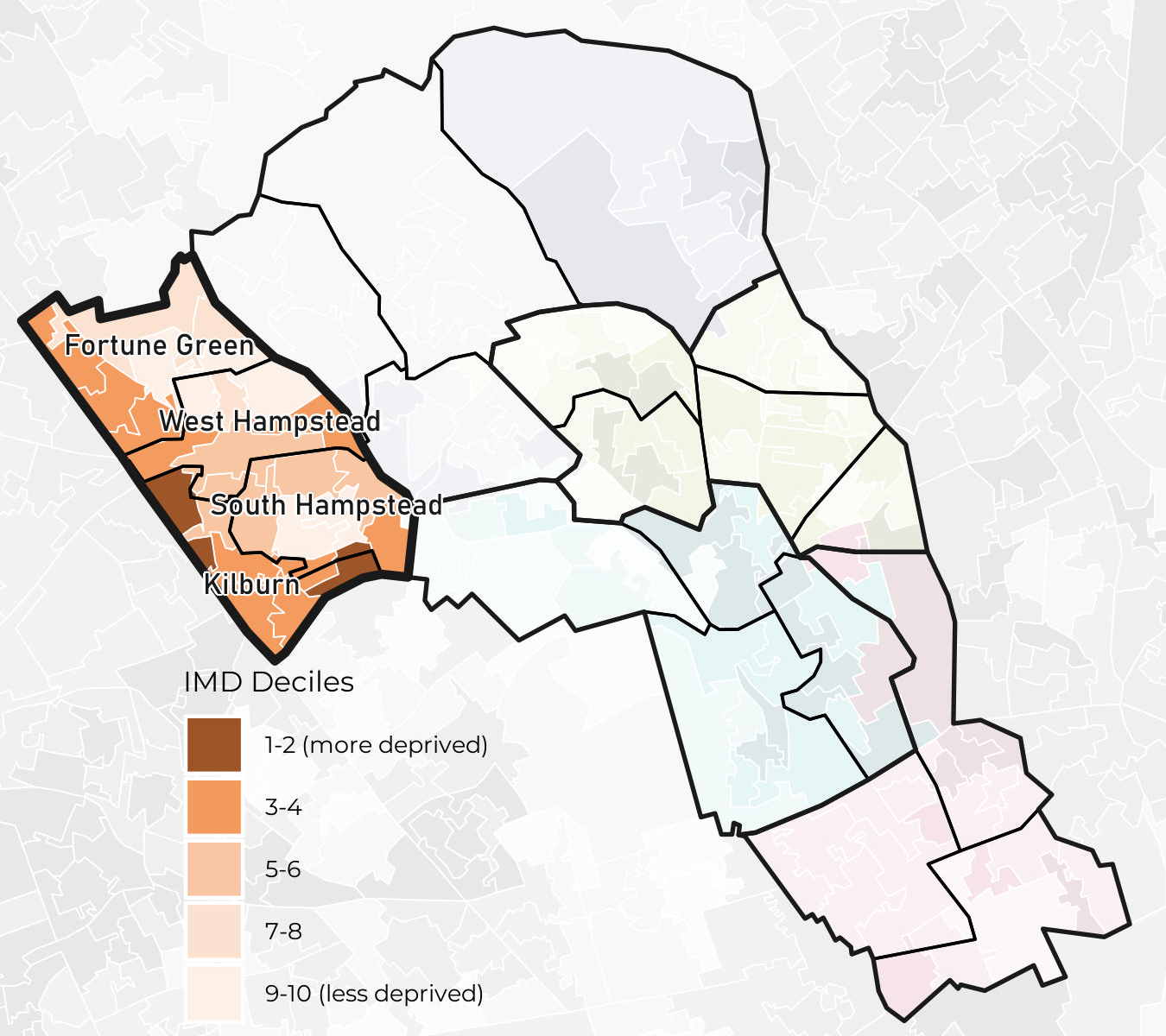
The most deprived LSOAs in the West neighbourhood neighbourhood according to IDACI (Income Deprivation Affecting Children Index) deciles are in Kilburn, and South Hampstead (decile 1) while the least deprived LSOAs are in Fortune Green (decile 10).
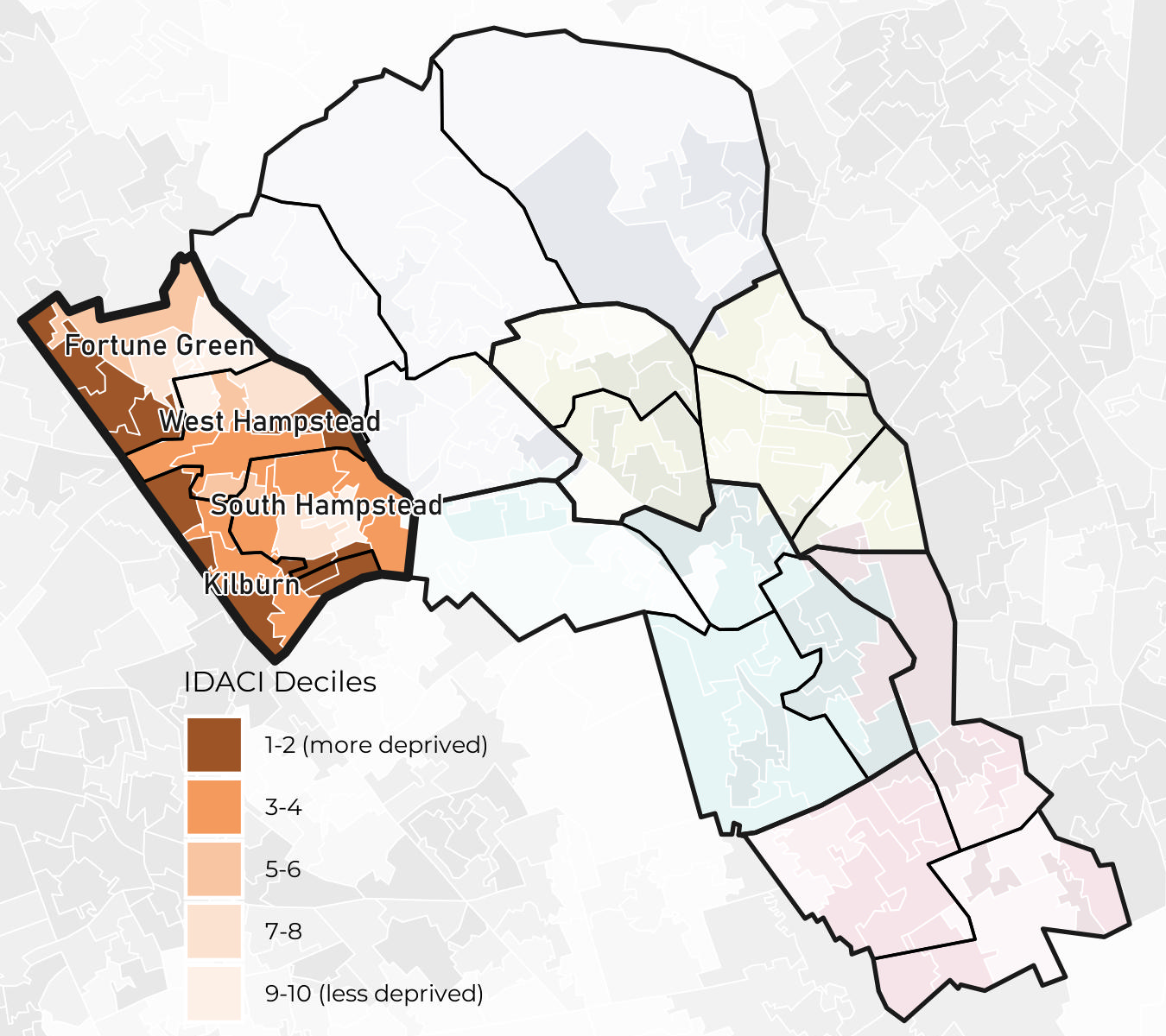
The most deprived LSOAs in the West neighbourhood neighbourhood according to IDAOPI (Income Deprivation Affecting Older People Index) deciles are in Fortune Green, Kilburn, West Hampstead, and South Hampstead (decile 1) while the least deprived LSOAs are in South Hampstead, and Fortune Green (decile 7).
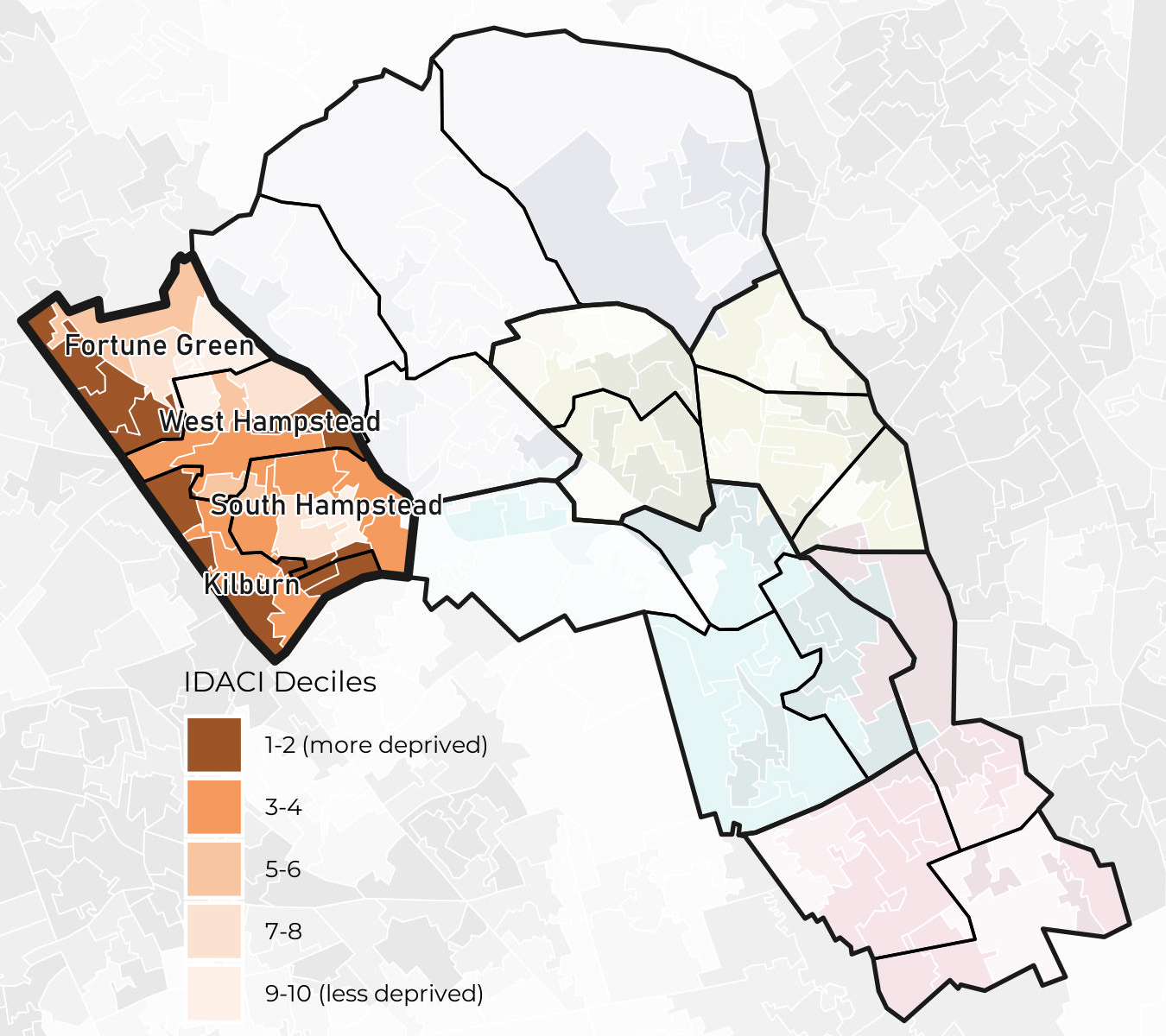
Environment
The place in which we live plays a key role in our health and wellbeing and is an important factor in the wider determinants of health. Access to green spaces and air quality indicators are presented below.
Most Lower Super Output Areas (LSOA) in the West neighbourhood sit within Quintile 2 for access to green spaces and within Quintile 4 for air quality.
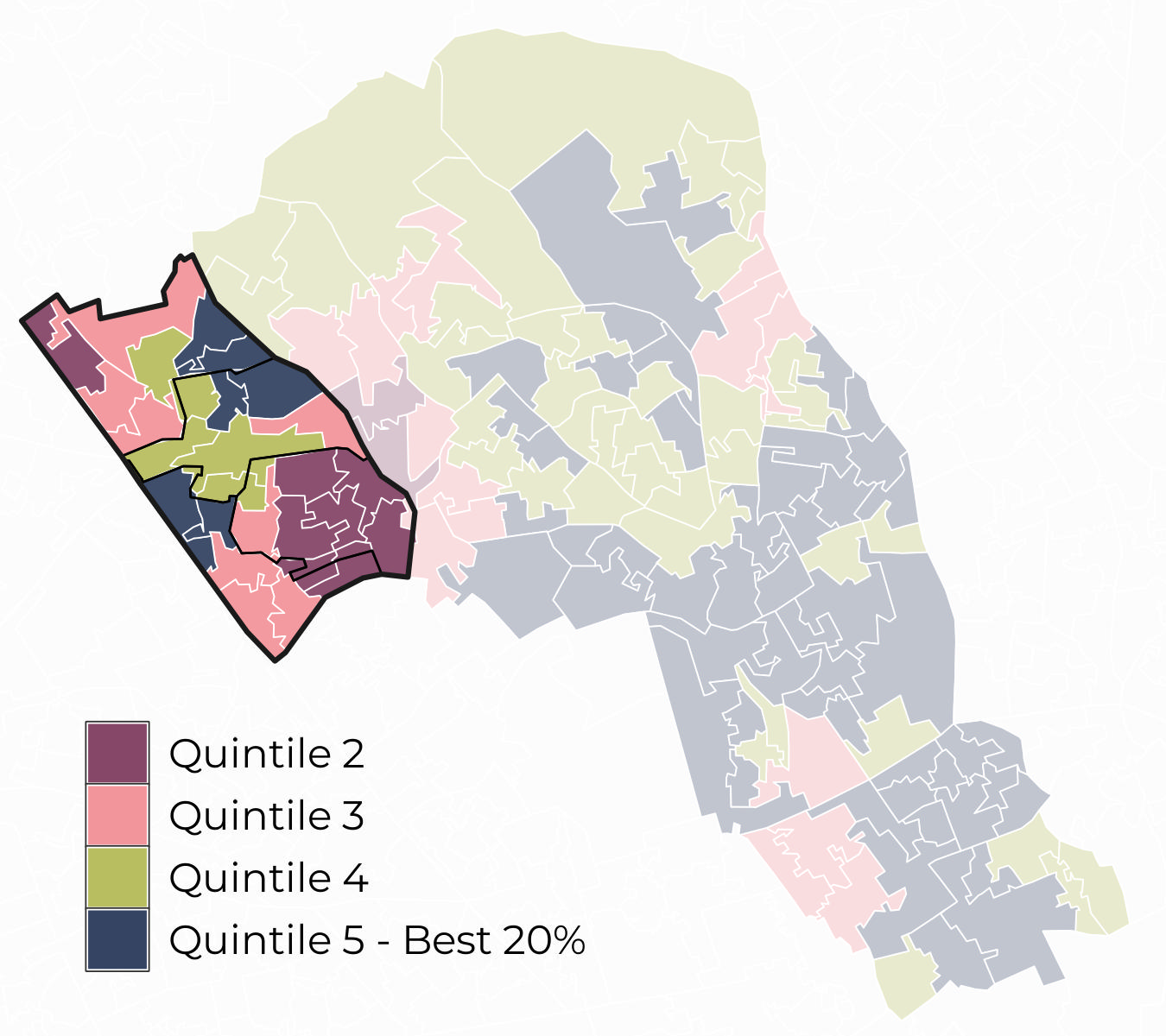
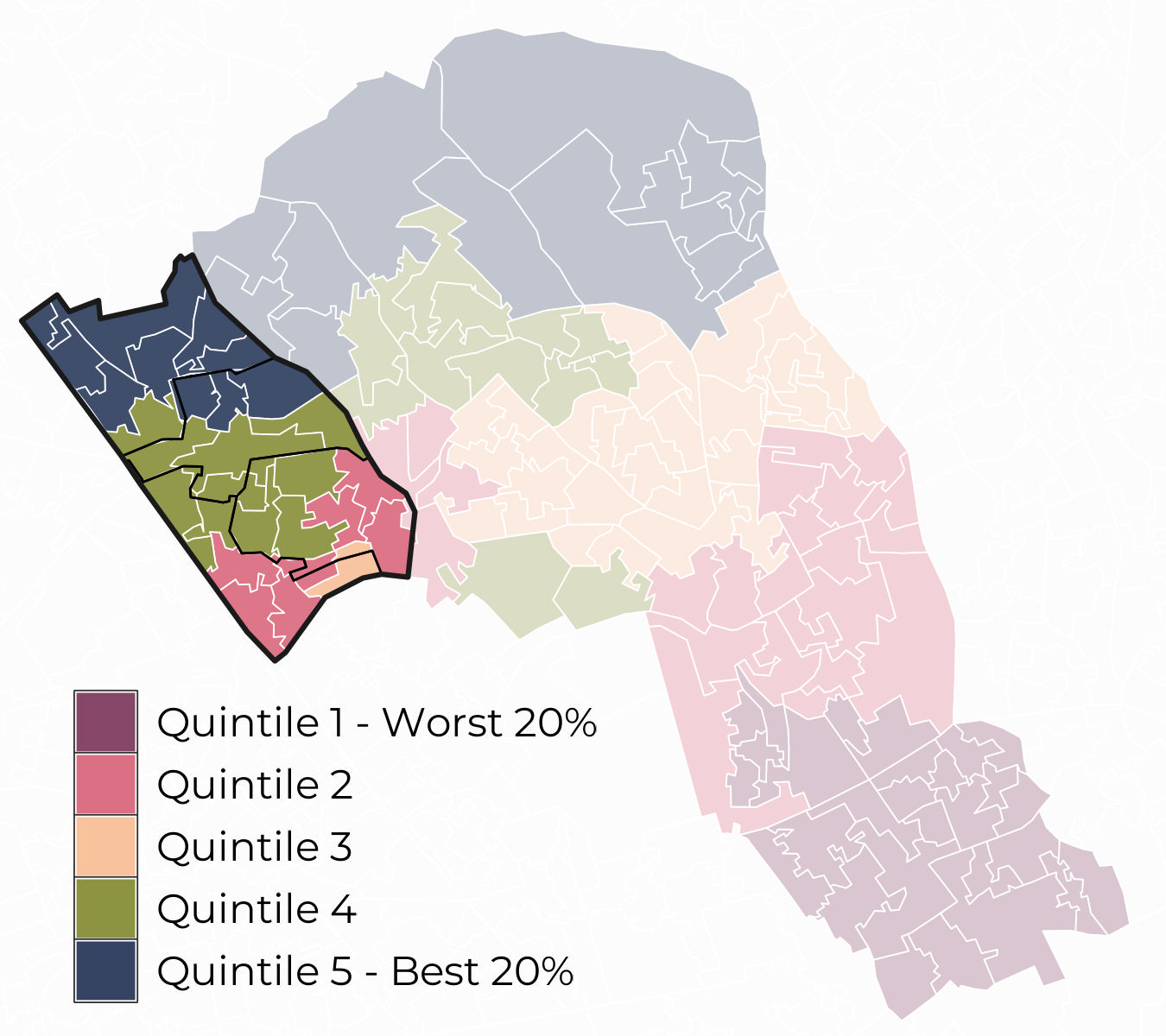
Behavioural risk factors and long-term conditions
Behavioural risk factors
The most prevalent behavioural risk factor in the West neighbourhood is Obesity (17.3%). The West neighbourhood has a statistically significant higher prevalence of Alcohol Abuse or Dependence, Smoking and Obesity compared to the rest of the borough.
Long-term conditions
The most prevalent long-term conditions in the West neighbourhood are Depression (12.04%), Hypertension (10.94%), Diabetes (4.48%), and Asthma (4.13%). The West neighbourhood has statistically significant higher prevalence of Cancer, Chronic Kidney Disease, Depression, Diabetes, Heart Failure, Hypertension, Osteoporosis, Rheumatoid Arthritis, and Serious Mental Illness compared to the rest of the borough.
Mental health
In addition to reporting the prevalence of depression and serious mental illness (SMI), the NIHR Small Area Mental Health Index (SAMHI) can be used to examine geographical variation in mental health-related indicators at the LSOA level within the area.
The worst LSOAs in the West neighbourhood neighbourhood according to SAMHI deciles are in Fortune Green, Kilburn, and West Hampstead (decile 3) while the best LSOAs are in Fortune Green, South Hampstead, and West Hampstead (decile 9).
